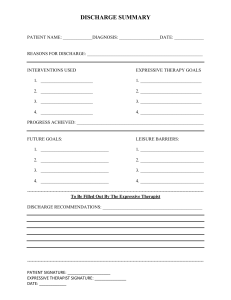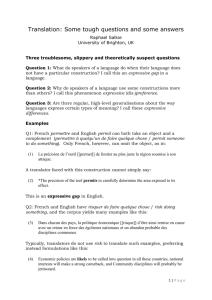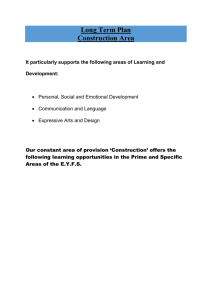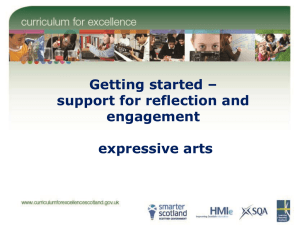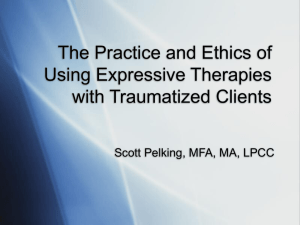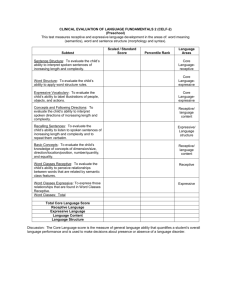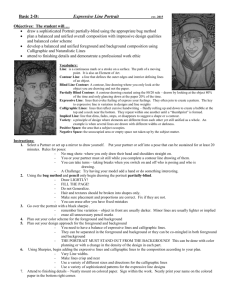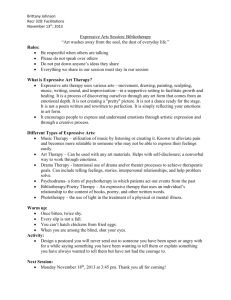You Don*t Have to Be An Artist to Express Yourself
advertisement
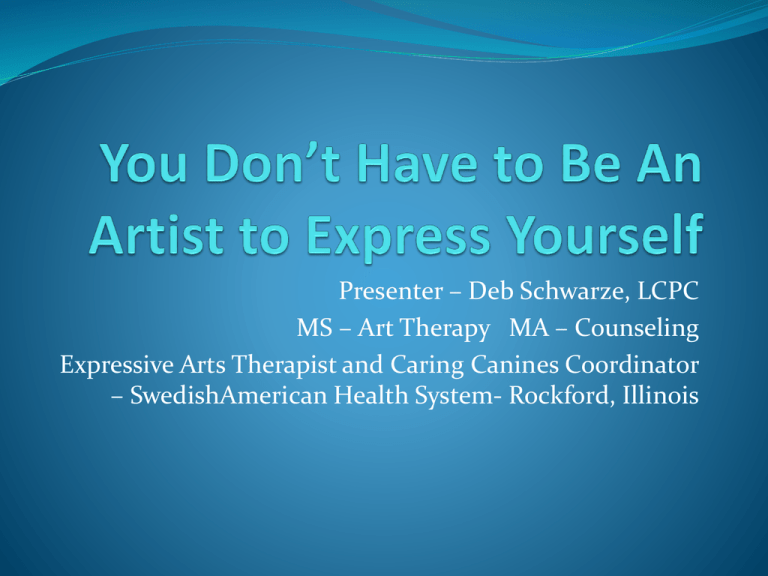
Presenter – Deb Schwarze, LCPC MS – Art Therapy MA – Counseling Expressive Arts Therapist and Caring Canines Coordinator – SwedishAmerican Health System- Rockford, Illinois What IS Art Therapy? According to the American Art Therapy Association, art therapy is “a mental health profession that uses the creative process of art making to improve and enhance the physical, mental and emotional wellbeing of individuals of all ages. It is based on the belief that the creative process involved in artistic selfexpression helps people resolve conflicts and problems, develop interpersonal skills, manage behavior, reduce stress, increase self-esteem and selfawareness, and achieve insight”. Where is Art Therapy Used? Medical facilities Outpatient therapy offices Long term care facilities Mental health facilities Schools Why Art? For people of all ages, there are some events and experiences for which we have no words Expressive therapies help us tap into the unconscious and help us express our hidden and/or buried emotions and thoughts But I Can’t Draw It REALLY doesn’t matter All of us are creative Because we are unique individuals, we show our creative sides in different ways As with any effective counseling experience, expressive therapies are designed to fit the individual’s needs and strengths What Kind of Art Making Is Used In A School Setting? There are truly no limits as to what can be utilized Supplies can range from a box of crayons and a piece of paper to elaborate art studios Expressive Therapies Involve More Than Drawing Pictures In addition to drawing or painting, expressive therapists can utilize: Journaling Music Drama Photography Writing stories Gardening Animals Etc, etc, etc Why Does It Work? According to Hass-Cohen & Carr (2008) and Lusebrink (2004), experiential therapies using motor activity (moving a crayon, paint brush, scissors, etc) stimulate and strengthen connections between the brain’s subcortical regions and the neo-cortex (bottom-up approach) OR cognitive challenges (trying to figure out how to manipulate the art making tools) activates and strengthens the connections between the neocortex and subcortical regions of the brain (topdown) approach The Less Technical Reasons Why It Works…. Creating something triggers the pleasure centers of the brain The distraction of focusing on the art makes it easier to talk The creative process helps foster a sense of mastery The focus can be on the “process” rather than the “product” Types of Art Supplies Used and Their Possible Meanings When a variety of choices are given, the choice of art media that the student makes, may be indicative of their emotional state What Do You Think These May Say? Use With Caution…. Non-Threatening for Most Everyone Expressive Art Journaling Designed Project VS Free Form Art Many Opinions An Art Therapist would look at what is most beneficial for the student/client As A Nurse in School Setting, How Does This Apply to Me? You have the advantage of interacting with students in a very different manner than other adults in their lives What Can I Do?—Make Referrals Students with attention difficulties may benefit from the different type of focus that art brings Students with cognitive deficits may benefit from utilizing the creative, right side of the brain Expressive arts also can allow students to “talk without words” Motor skills can be practiced Life As An Art Therapist in a Public School Setting Rural eastern Oregon School district of about 4000 students Employed as a behavior specialist in the Special Education Department to work at four elementary schools Designed and implemented the ABLE (Assisted Behavior Learning Environment) Program Stories….. Due to confidentiality, I can’t talk about specifics, but some examples include “Jane” and her abuse drawing “Bobby” and the dog Comfort Rooms and art “John” and the healing process Summary Expressive arts therapy involves much more than drawing a picture It includes many forms of non-verbal self expression It touches our lives in ways that we are just beginning to understand Let’s Use That Creative Right Side of the Brain! Supplies are on your table Let’s have some fun! Questions Thank You
